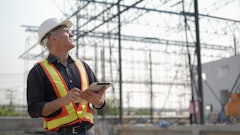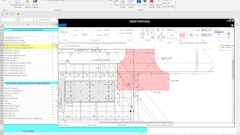
Construction software provider Newforma highlights 11 industry trends construction contractors should keep on their radar — or start incorporating into their businesses — for 2016 and beyond.
#1 Drones will assume more roles on the jobsite
In 2015, drones became popular among consumers, and consumer technologies often make their way onto jobsites. For example, iPads. Drones will become more pervasive as people get used to them — and as the Federal Aviation Administration figures out how to regulate them or gets out of the way. Picture using drones for tasks such as visual inspections of places dangerous or difficult for humans to reach, such as bridge undersides and curtain walls.
#2 More workers will wear technology
Construction can be dangerous. To ensure the health and safety of workers (and control expensive insurance claims), life safety wearable technologies will become more popular. For example, wearables can relay vital signs for people on remote or dangerous parts of the jobsite and alert supervisors if a diabetic’s blood sugar goes low or heart rate beats dangerously fast. And injured workers in remote locations will have a way to signal for help.
#3 Robotics will get a foothold
By “robotics,” think “3D printing.” For example, a robot that lays out a masonry wall. People (or other machines) feed the bricks and mortar, and the robot erects the wall.
#4 More automation on the construction site
After 15 years of experimenting with robotics and 3D printing, we’ll have self-assembling buildings. You’ll “print” the building. As in manufacturing, construction will be marked by high automation and high quality. And that quality will be repeatable! As a result of automation, the demand for unskilled labor will continue to decline, and the demand for skilled labor will continue to rise. Workers will need to know how to run the machines.
#5 Visual planning software will become necessary
Visual planning software should be in use because those technologies support the democratization of decision-making and unlock the potential of people by fostering collaboration. Democratization means it’s not just your skills you bring — your steelwork, carpentry, drywall or painting — but the way you solve problems, derived from your life experience. It’ll unlock solutions you would not dream as a person or small group. But note, such technologies only work on top of a culture of collaboration and democratic decision-making. Without that culture, the technologies are bricks.
#6 Cloud adoption
According to Information Week, 94% of U.S. businesses in 2015 reported having "at least a hybrid cloud strategy" for remotely storing and accessing shared data. That was up from 74% in 2014. For the construction industry, the cloud offers a combination of best practice workflows, stakeholder accountability and mobile access.
#7 Security strategies
Hand in hand with increasing reliance upon cloud-based services is the related rise in security concerns that emerge when multiple parties in diverse geographic areas gain access behind another company's firewalls. So, a thoughtful security strategy is truly a must now.
#8 Geographic diversification
The classic strategy of "not having all your eggs in one basket" helped many firms survive the last global recession, so more are now adopting the approach as a safeguard. For example, SOM reports that 90% of the projects its people are working on now are outside of the U.S. But China’s economic downturn in 2015 caused many firms to close offices and reduce staff there, too. So, this strategy has to be nimble, as well.
#9 Data sovereignty
More international work will require increased sensitivity to this growing issue. Several countries now require that all of the information about a project must be physically located within the borders of the host nation. For this reason, infrastructure providers like Amazon (with AWS) and Microsoft (with Azure) are having to set up designated servers in China, Australia and Europe.
#10 Knowledge mining
Every service industry is gathering more and more data about every one of its current and prospective customers. That will make the future solutions offered even more tailored to their specific needs. So the competition will become tighter and more focused on satisfying customer needs that are now even more of an open book for vendors.
#11 Labor shortage
Newforma, itself, is looking to hire 30 people, but that is reflective of a much wider shortfall. In fact, expect to see the balance of power in our industry actually shift this year to the subcontractors. They will hold the keys to most of the new jobs that will need to be filled.





























